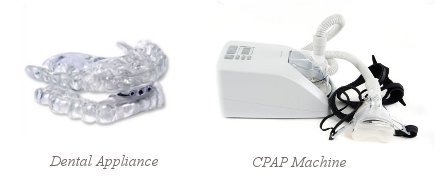 In addition to the obvious symptoms of feeling tired upon waking or while engaging in everyday activities, there are also a number of serious health issues that can result from Obstructive Sleep Apnea and Snoring. We at Chicago Beautiful Smiles/Chicago Beautiful Sleep can screen for and treat Obstructive Sleep Apnea (“OSA”) and snoring with custom made oral sleep appliances. There is an alternative to the “C-Pap” machine.
In addition to the obvious symptoms of feeling tired upon waking or while engaging in everyday activities, there are also a number of serious health issues that can result from Obstructive Sleep Apnea and Snoring. We at Chicago Beautiful Smiles/Chicago Beautiful Sleep can screen for and treat Obstructive Sleep Apnea (“OSA”) and snoring with custom made oral sleep appliances. There is an alternative to the “C-Pap” machine.
The Difference Between Snoring and Sleep Apnea
Loud snoring can often make sufferers the target of ridicule and endless jokes. The noise may also cause sore ribs from late night jabs from partners, but snoring is nothing to joke about. Although men, women and sometimes children find themselves dealing with the social issues snoring disruptively can cause, this habit may show signs of other possibly life-threatening issues, such as OSA, or obstructive sleep apnea.
Snoring Isn’t Always Sleep Apnea
Snoring is a common issue. Anywhere from 30 to 50 percent of people in the US suffer from snoring at some point in their lives. Some suffer more significantly than others. Many people share tales of both women and men who snore loudly enough for others to hear them from several rooms away.
This kind of loud and disruptive snoring can cause several issues in a person’s life. Sleep disturbances, waking episodes and even marital discord can be caused from snoring. It’s important to keep in mind, however, just because a person snores, doesn’t mean they have OSA. Although snoring may simply resort in a social inconvenience, there are still treatment options available to those who feel they are problem snorers.
Is It Sleep Apnea?
Obstructive sleep apnea is different from simple snoring because it’s a condition that can potentially be life-threatening and requires proper medical attention. Undiagnosed OSA can cause issues, such as stroke, heart attack, high blood pressure, irregular heartbeat, decreased libido and heart disease. OSA can also be directly linked to relationship issues, productivity loss and accidents that are caused from the daytime drowsiness brought on by this condition.
Although fairly common, sleep apnea can still cause serious issues. It’s believed at least one in five people suffer from sleep apnea that is considered mild and one of every 15 adults suffers from a more moderate form. It’s also believed up to three percent of children may suffer from OSA. While sleeping, the upper airways may become obstructed by a large tongue or tonsils or even excess tissues. Other issues may be the muscles of the airway itself. These muscles collapse and rest while you’re sleeping. The jaw’s position and nasal passages are also contributing factors to OSA. Special pillows are often used to help reduce the symptoms and impacts of sleep apnea. Sleep Healthier offers sufferers a guideline on how to select one of these pillows that may be most effective for specific situations.
All of these factors can cause the brain to send impulses during sleep to awaken a person slightly in hopes of restarting the process of breathing. While this impulse repeats several times during a night, the potential is there to cause several health issues, such as sleep deprivation. Having sleep apnea means you have more than 30 of these restarts within a seven-hour sleep cycle. Some of the most severe cases of sleep apnea can result in this process happening 500 times in one seven-hour sleep cycle, with the lack of breathing lasting up to 90 seconds.


